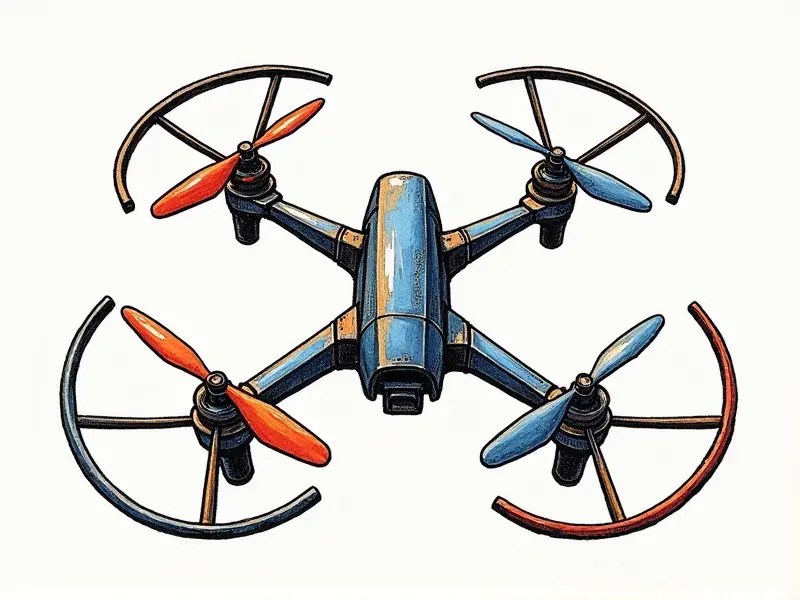Drone safety guidelines

Stay Legal: Drone Flight Regulations
Before taking your drone into the air, it’s crucial to understand and adhere to local regulations. In many countries, including the United States and Canada, drones must be registered with the Federal Aviation Administration (FAA) or Transport Canada, respectively. Always check for any specific rules in your area regarding flight altitude, distance from people, and no-fly zones such as airports and military bases.
Additionally, it’s important to follow airspace restrictions and obtain necessary permits if you plan to fly over sensitive areas like government buildings or private property without explicit permission.
Essential Drone Safety Rules to Follow
To ensure safe drone operation, there are several fundamental rules every pilot should observe:
- Visual Line of Sight: Maintain a clear visual line of sight with your drone at all times. This ensures you can react promptly if the drone veers off course or encounters obstacles.
- Avoid Crowded Areas: Flying in densely populated regions increases the risk of accidents and privacy concerns. Choose open spaces like parks or fields for safer operations.
- No Fly Zones: Be aware of designated no-fly zones, which include military bases, prisons, and other restricted areas where flying drones is prohibited to protect national security and personal safety.
Top Tips for Safe Drone Flying
Here are some additional tips to enhance your drone-flying experience:
- Pre-flight Inspections: Conduct thorough checks of your drone’s batteries, propellers, and other critical components before each flight. A well-maintained drone performs better and is less likely to malfunction.
- Battery Management: Ensure you have enough battery power for the entire duration of your planned flight. Always carry spare batteries to avoid unexpected landings due to insufficient charge.
- Weather Conditions: Monitor weather forecasts and be prepared for sudden changes that could affect drone stability, such as strong winds or heavy rain.
Beginner's Guide to Drone Safety
If you're new to drone flying, start by familiarizing yourself with basic safety principles. Begin in a controlled environment like an open field away from people and obstacles. Practice maneuvering the drone using different modes and settings until you feel comfortable.
Protect Your Drone with These Safety Tips
Your investment deserves protection. Here are some ways to safeguard your drone:
- Use Protective Gear: Cases, propeller guards, and landing gear can prevent damage during transport or accidental drops.
- Insurance Coverage: Consider purchasing insurance that covers both the drone itself and any potential liabilities arising from its use.
Avoiding Common Drone Flying Mistakes
Mistakes are a part of learning, but some can be avoided with proper knowledge. Here’s how to steer clear of common pitfalls:
- Overreaching: Don’t attempt flights beyond your skill level or the drone's capabilities.
- Lack of Pre-flight Checks: Skipping pre-flight inspections can lead to malfunctions mid-air, causing accidents and damage.
Drone Safety Checklist Before Takeoff
Use this checklist before every flight to ensure your drone is ready:
- Battery Check: Ensure batteries are fully charged and compatible with the drone model.
- Propeller Inspection: Look for any signs of damage or wear on propellers.
- Sensor Calibration: Calibrate sensors to ensure accurate flight performance.
Ensuring Drone Safety in Urban Areas
Flying drones in urban environments poses unique challenges. Here are some tips for safe operation:
- Avoid Tall Structures: Keep a distance from buildings, trees, and power lines to prevent collisions.
- Respect Privacy: Be mindful of people’s privacy when taking photos or videos in public spaces.
Weather Considerations for Drones
Weather conditions significantly impact drone performance. Here are some guidelines:
- Wind Speeds: Avoid flying during high-wind conditions to prevent loss of control or damage.
- Rain and Fog: Moisture can interfere with drone electronics; avoid flying in wet weather unless your drone is waterproof.
Emergency Protocols for Drone Flyers
In case of an emergency, follow these protocols:
- Landing Safely: If you lose control or encounter a malfunction, land the drone as soon as possible in a safe area.
- Contact Authorities: Report any incidents to local authorities if your drone causes damage or injury.
Protecting Privacy with Drone Use
Respect others' privacy when using drones. Be aware of laws regarding photography and videography in public spaces, and always obtain permission before recording individuals or private property.
Conclusion
Drone safety is paramount for both the operator and those around them. By adhering to regulations, following essential rules, and implementing protective measures, you can enjoy your drone flying experience responsibly and safely. Remember, every flight should be planned with care and consideration for all potential risks.

